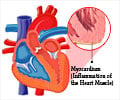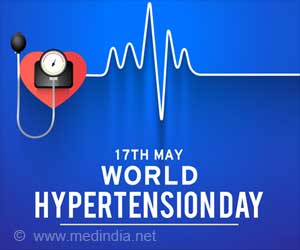- The global prevalence of childhood obesity linked with heart disease risk in adulthood is at its peak level
- Considering the risk trajectories into adulthood, it is important to reduce heart disease risk as early as childhood
- Focusing on ways to tackle childhood physical inactivity and unhealthy diet, could prevent heart disease
Now, the focus lies on the obesity-related risk trajectories from childhood to adulthood and on the need for childhood screening programs and consecutive preventive strategies. As a main aim, both exercises as well as nutrition behavior are considered key risk-managing strategies.
Childhood Obesity: Is It Being Taken Seriously?
The newly released scientific statement from the European Association of Preventive Cardiology and the European Childhood Obesity Group aims at giving expert insights on how obesity-related childhood heart disease risk needs to be approached to change risk trajectories as primary prevention strategies for reducing the high burden of heart disease.Obesity-related heart disease risk is a complex interplay between genetic factors and the environment. Even before birth, both maternal and paternal lifestyle behavior affect the offspring. Moreover, the interaction between gut and brain hormones influences hunger (1✔ ✔Trusted Source
Childhood Cardiovascular Risk Factors and Adult Cardiovascular Events
Go to source).
Exposure to toxins, endocrine-disrupting chemicals, and viruses contributes to the development of obesity. Thus, the mechanisms behind the development of childhood obesity are complex and need to be considered while planning for future obesity prevention policies.
Nutrition Behaviour and Diet as Risk Managing Strategies for Childhood Obesity
Unhealthy food marketing in social media is a powerful determinant of obesity among children and adolescents. They affect food choices and food intake in children. Most children are exposed to the promotion and marketing of fast food and sugar-sweetened beverages. Therefore, the promotion of healthy foods on social media may be an effective means to improve healthy dietary behaviors in children (2✔ ✔Trusted SourceFood Marketing Influences Children's Attitudes, Preferences and Consumption: A Systematic Critical Review
Go to source).
Beyond exercise and nutrition, psychological aspects are often associated with obese children and should be addressed in prevention and lifestyle interventions. Individuals with obesity often experience social stigma, which may lead to serious mental health issues. Addressing weight stigma is therefore important to improve health and well-being in children with obesity.
The impact of heart risk factors such as obesity and hypertension are well understood in the adult population. These factors are already present in children and adolescents are key determinants of adult health. It is shown that obese children are five times more likely to suffer from obesity as adults compared with those without childhood obesity.
Weighing Childhood Obesity Interventions
To reduce the obesity-induced accelerated heart disease risk in children, it is important to assess the risk factors while providing preventive interventions. Overall, weight loss treatment that reduces associated heart risk for children and adolescents needs to be investigated with long-term follow-up, which will improve the health trajectory for the next generation.Despite significant research advances into the physical, social, and economic consequences of childhood obesity in the last decades, there remain major research gaps in the peer-reviewed literature, as well as major challenges in the practical implementation of prevention and treatment strategies (3✔ ✔Trusted Source
Review of Childhood Obesity: From Epidemiology, Etiology, and Comorbidities to Clinical Assessment and Treatment
Go to source).
Further, the challenges in tackling childhood obesity can be reduced by conducting research including comprehensive individual-level analyses, pushing for the adoption of targeted clinical and social interventions; emphasizing improved awareness among the healthcare sector, educational institutions, government, and the general public; change in global policies to mitigate the increasing risk trajectories of childhood obesity and consideration of novel pharmacotherapeutics as an adjunct to lifestyle interventions in reducing heart disease risk trajectories.
References:
- Childhood Cardiovascular Risk Factors and Adult Cardiovascular Events - (https://www.nejm.org/doi/10.1056/NEJMoa2109191)
- Food Marketing Influences Children’s Attitudes, Preferences and Consumption: A Systematic Critical Review - (https://www.mdpi.com/2072-6643/11/4/875)
- Review of Childhood Obesity: From Epidemiology, Etiology, and Comorbidities to Clinical Assessment and Treatment - (https://www.sciencedirect.com/science/article/abs/pii/S002561961630595X)
Source-Medindia
















